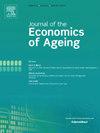设计和实施针对老年人的多维贫困衡量标准:在中等收入国家的应用
IF 2
3区 经济学
Q2 DEMOGRAPHY
引用次数: 0
摘要
我们根据秘鲁四次全国家庭调查(2018年、2019年、2022年和2023年)的数据,设计并实施了基于Alkire-Foster方法的全面且与政策相关的老年人多维贫困指数,从而为低收入和中等收入国家的老年人贫困衡量文献做出贡献。我们的衡量标准包括15项指标,涵盖七个方面:社会联系、知识、健康、就业和社会保护、住房、水和卫生设施以及能源。我们设定了一个参考阈值,如果一个老年人在我们测量的七个维度中至少有三个维度被剥夺,那么他就被认定为多维贫困。我们的研究结果显示,秘鲁老年人的多维贫困发生率在2018年至2023年期间下降了8.6%,但仍高达35%。老年妇女、生活在农村地区的老年人、老年土著居民和残疾老年人在多维度上比他们的同龄人更贫穷,贫困对多维度贫困的贡献最大,在各个亚群体和次国家区域各不相同。我们的研究结果可以指导政策制定者确定资源分配的优先顺序,以减少老年人的多维贫困。我们估计,23%的老年人口经历了多维而非货币贫困,突出了这些方法的互补性。此外,我们发现12%的老年人同时生活在多维度和货币贫困中,在农村地区这一比例上升至30%。我们的研究将有关多维贫困的最新概念和实证文献与有关低收入和中等收入国家老年人贫困测量的文献联系起来。本文章由计算机程序翻译,如有差异,请以英文原文为准。
Designing and implementing an older people-specific multidimensional poverty measure: An application to a middle-income country
We contribute to the literature on poverty measurement in older age in low- and middle-income countries by designing and implementing a comprehensive and policy-relevant older people-specific multidimensional poverty index based on the Alkire-Foster method, estimated using data from four waves of Peru’s national household survey (2018, 2019, 2022, and 2023). Our measure includes 15 indicators spanning seven dimensions: social connectedness, knowledge, health, employment and social protection, shelter, water and sanitation, and energy. We set a referential threshold that identifies an older individual as multidimensionally poor if they experience deprivations in at least three out of seven dimensions of our measure. Our results show that multidimensional poverty incidence among older people in Peru has decreased by 8.6% between 2018 and 2023 but remains high at 35%. Older women, older people living in rural areas, older indigenous people and older people with disability are multidimensionally poorer than their counterparts, with deprivations contributing the most to multidimensional poverty varying across subgroups and subnational regions. Our findings can guide policymakers in prioritising resource allocation by identifying key deprivations to reduce multidimensional poverty among older adults. We estimate that 23% of the older population experience multidimensional but not monetary poverty, highlighting the complementarity of these approaches. Additionally, we find 12% of older people living in multidimensional and monetary poverty simultaneously, rising to 30% in rural areas. Our study bridges the most up-to-date conceptual and empirical literature on multidimensional poverty with the literature on poverty measurement in older age in low- and middle-income countries.
求助全文
通过发布文献求助,成功后即可免费获取论文全文。
去求助
来源期刊

Journal of the Economics of Ageing
Multiple-
CiteScore
4.10
自引率
4.50%
发文量
46
审稿时长
49 days
期刊介绍:
The Journal of the Economics of Ageing (JEoA) is an international academic journal that publishes original theoretical and empirical research dealing with the interaction between demographic change and the economy. JEoA encompasses both microeconomic and macroeconomic perspectives and offers a platform for the discussion of topics including labour, health, and family economics, social security, income distribution, social mobility, immigration, productivity, structural change, economic growth and development. JEoA also solicits papers that have a policy focus.
 求助内容:
求助内容: 应助结果提醒方式:
应助结果提醒方式:


